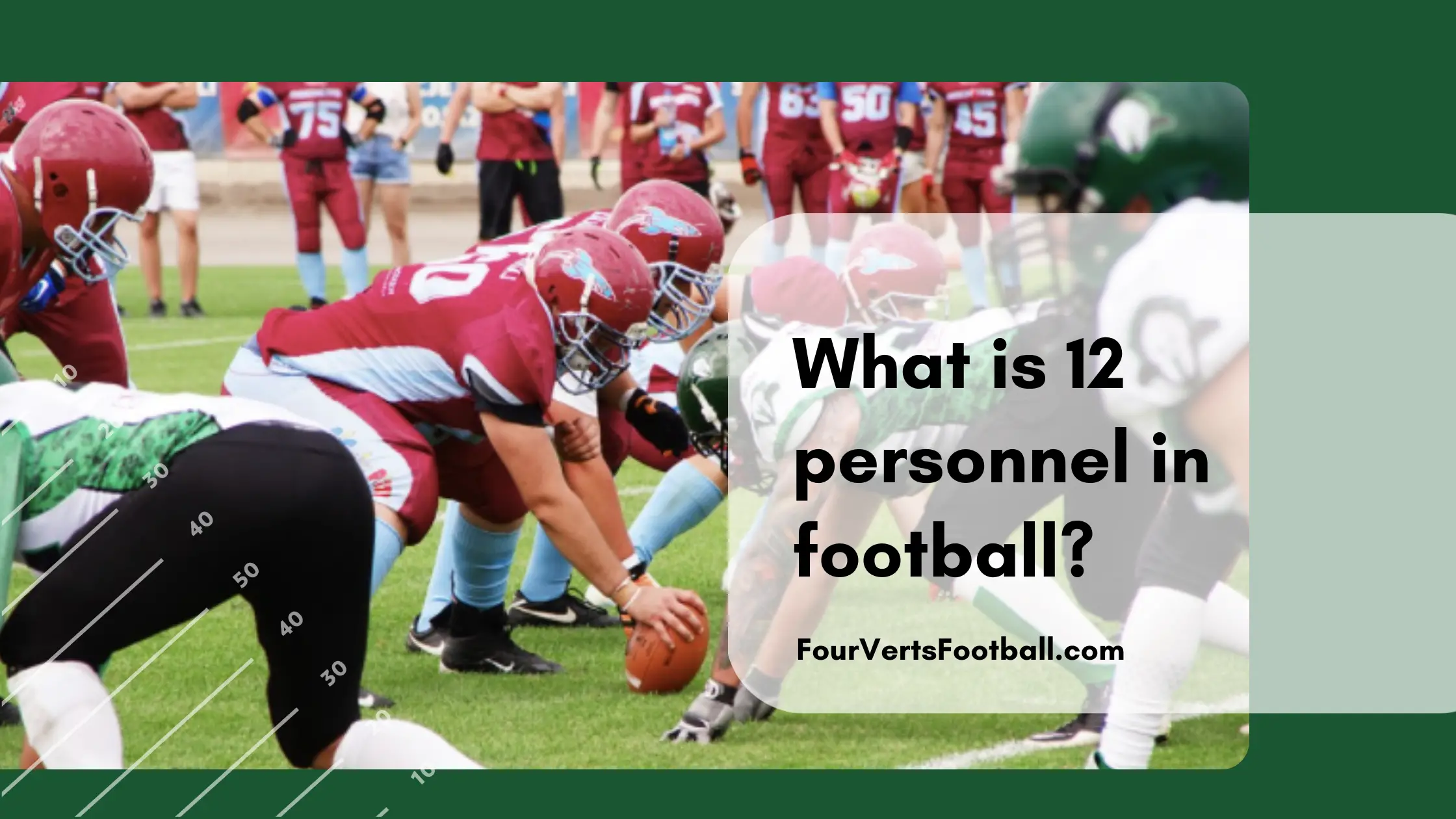The term 12 personnel in football refers to an offensive grouping that includes one running back, two tight ends, and two receivers. The inclusion of two tight ends in this personnel grouping means it is often used to run the football.
When you hear an announcer state a number before the word personnel they are communicating the number of tight ends and running backs on the field.
Common examples of these groupings include 11 personnel, 23 personnel and 10 personnel.
The key to understanding these packages is knowing that each digit in the personnel number refers to a specific position.
The first digit is going to represent the number of running backs on the field. The second digit represents the number of tight ends on the field.
And since there are almost always five offensive linemen and one quarterback you can use the process of elimination to find out how many wide receivers are in the grouping.
For example with 12 personnel, we know there is one running back and two tight ends. We know this because the first digit is one and the second digit is two.
If we know there are five lineman and one quarterback you can add that to the one running back and two tight ends to get a total of nine. Since we know there are eleven starters on the offense this means the remaining two players must be wide receivers.
You can use this process of elimination with any numbered personnel grouping. This way you can always tell how many players are lining up at each position just by looking at a two digit number.
Benefits Of 12 Personnel In Football
Now that you understand what 12 personnel means in football you may be wondering what exactly this grouping of players is used for. Below we will break down the main benefits of using 12 personnel in football.
Quality Blocking On Runs
One positive aspect of running 12 personnel is that you are going to have some quality run blocking. In this personnel group there are going to be two tight ends.
In most cases, these players will line up at the end of the formation. On running plays, these tight ends can act as extra offensive linemen opening up holes and blocking for the running back downfield.
Some teams may use a tight end in the backfield in this grouping. This can allow the tight end to act as a fullback in a power run scheme.
In these situations, the tight end will run through the hole first and block the linebacker that is waiting to make the tackle.
Several Receiving Options
Another benefit of this personnel grouping is that it still comes with a fair amount of receiving options.
Oftentimes formations that are effective at running the ball do not have many skill position players to throw to.
Since the tight ends are also able to catch passes the team is going to have a number of quality receiving options.
Tight ends are much better pass catchers than full-backs and will allow your team to work in more receiving patterns with this personnel grouping.
This is also an effective grouping to use when in the redzone. Having the ability to run the ball as well as having several tight ends means the team will have several red zone threats at their disposal.
Position Grouping Doesn’t Tip Your Hand
With many position groupings, the defense will have a good idea of whether you are going to run or pass.
10 personnel for example features one running back and four receivers. When using this grouping teams are quite confident that they are going to pass the ball.
If you are in 23 personnel there are two RBs and three TEs, this type of personnel almost guarantees you are going to run the ball.
Twelve personnel on the other hand features a nice mix of both. With two tight ends teams understand that this offense will be able to run the ball effectively.
But with two wide receivers as well they must respect that you also have numerous passing options.
For this reason, this grouping can make it difficult on the defense as they are often unsure what type of play is coming.

